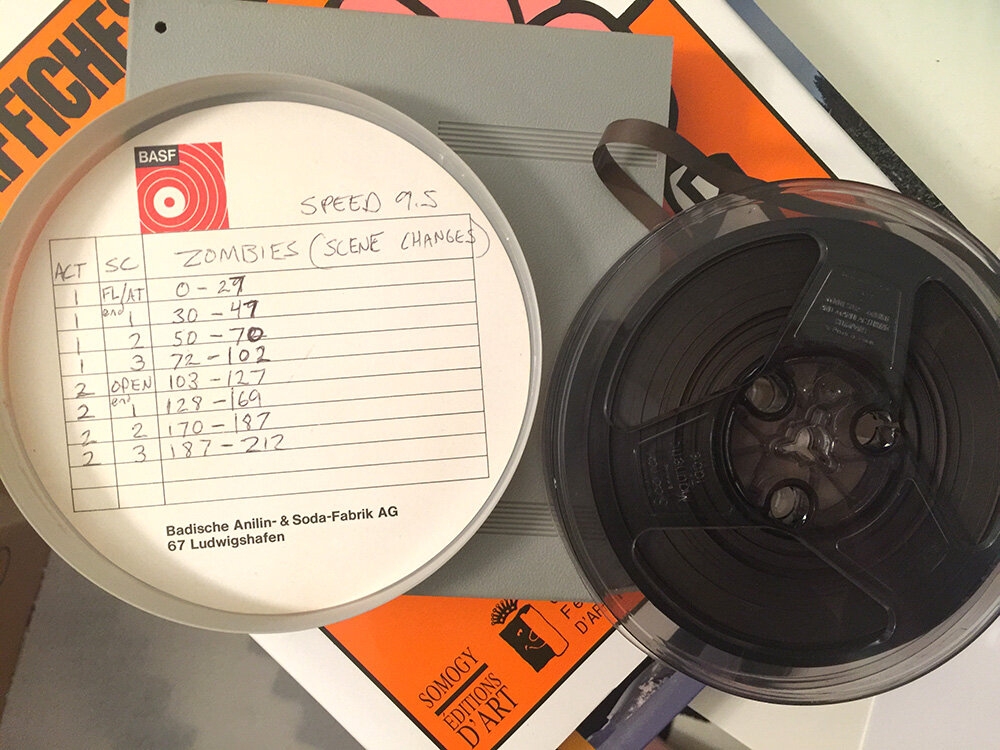Akai Reel to Reel Tape Recorder
So my girlfriends neighbor has been putting out free stuff on his front lawn for the past three weeks, some of it really good stuff, like new or barely used electronic equipment, and it’s become our own personal thrift shop. We stop and check it out every morning to see what he puts out because he’s been putting new stuff out everyday. One morning a few weeks ago we were walking the dogs and there was a beautiful, PRISTINE, 4-track reel to reel tape recorder sitting there on his front lawn. Just sitting there like this…..
My “new” AKAI 4000DS, in immaculate condition.
It is an Akai 4000DS, a 1/4” magnetic tap recorder produced in the 1970s that can record left and right channels (stereo) separately with a microphone or RCA jacks in the back. It’s a large, heavy machine that looks like a real work of art. I love vintage recording equipment of any kind so even if I were unfamiliar with reel to reel tape machines, I would have grabbed this no matter what, but I actually have a lot of experience using them.
A tape from my sound design days at Clarion University - its the scene change music for “Night of The Zombies” - the numbers are cues on the tape counter for me to know how long to play the tape between scenes.
I had seen plenty of reel to reel tape players when I was a kid in the Seventies. They were part of pop culture and even though they weren’t as common to see as a record player, or even 8-track tape players, they were still a familiar sight in households and on TV. At one point in the 80’s I had my own small reel to reel tape recorder I got from my Uncle Don. I learned how to use large 4 track reel to reel tape recorders (like the Akai) when I worked at WCCB, the AM radio station at Clarion University. WCCB had a production room in the back of the station that housed two reel to reel machines that were wired to an eight channel mixing board that was itself connected to two turntables, two CD players, two cassette tape decks, a cart machine, and a microphone. I spent hours in the studio making weird audio collage tapes by mixing CDs and playing records at half speed simultaneously, and eventually I became good enough at operating reel tape machines that I was doing sound design for a few theater productions. I would work with the directors to create the sound effects and music cues that I would construct on tapes and then run during the shows on the tape players.
I couldn’t believe my luck to find a machine like this - FOR FREE - that was so obviously well taken care-of and dry stored, and it still had the manual in perfect condition. I immediately took it back to the house, figuring I could give it a test with the tapes I still had from Univeristy.
A few days later I had the chance to thank the guy who put it out on his lawn in person, and he was genuinely happy that it was going to someone that appreciates it. He then gave me a massive box full of his old tapes!! My luck was getting , lots of 7” and 5” reels of magentic tape, mostly home-taped copies of weird hippie LPs from the late 60’s and early 70’s, but there were a lot of commercially produced tapes as well, from Jefferson Airplane, Bob Dylan, Joan Baez and more.
Just part of the tape collection neighbor Jim gave me. Look at that selection of albums!!
I only recently had the chance to actually hook it up to speakers and properly test it to be sure it worked. I ran the speaker wires through my Bose speaker because it has a stereo input and I can feed left and right components through it. The Akai recorder worked perfectly! I tested it at 3 3⁄4 and 7 1⁄2, with the home recorded reels (A Doors album at 3.75) and a commercially produced tape (Jefferson Airplane at 7 1/2). 3 3⁄4 and 7 1⁄2 refers to the inches per second that the tape runs through the machine. 3 3/4 is a slower speed, so you can record more on a tape. I’ll might post more about this machine in the future, but for now, here’s a sample of how the machine looks and sounds.






